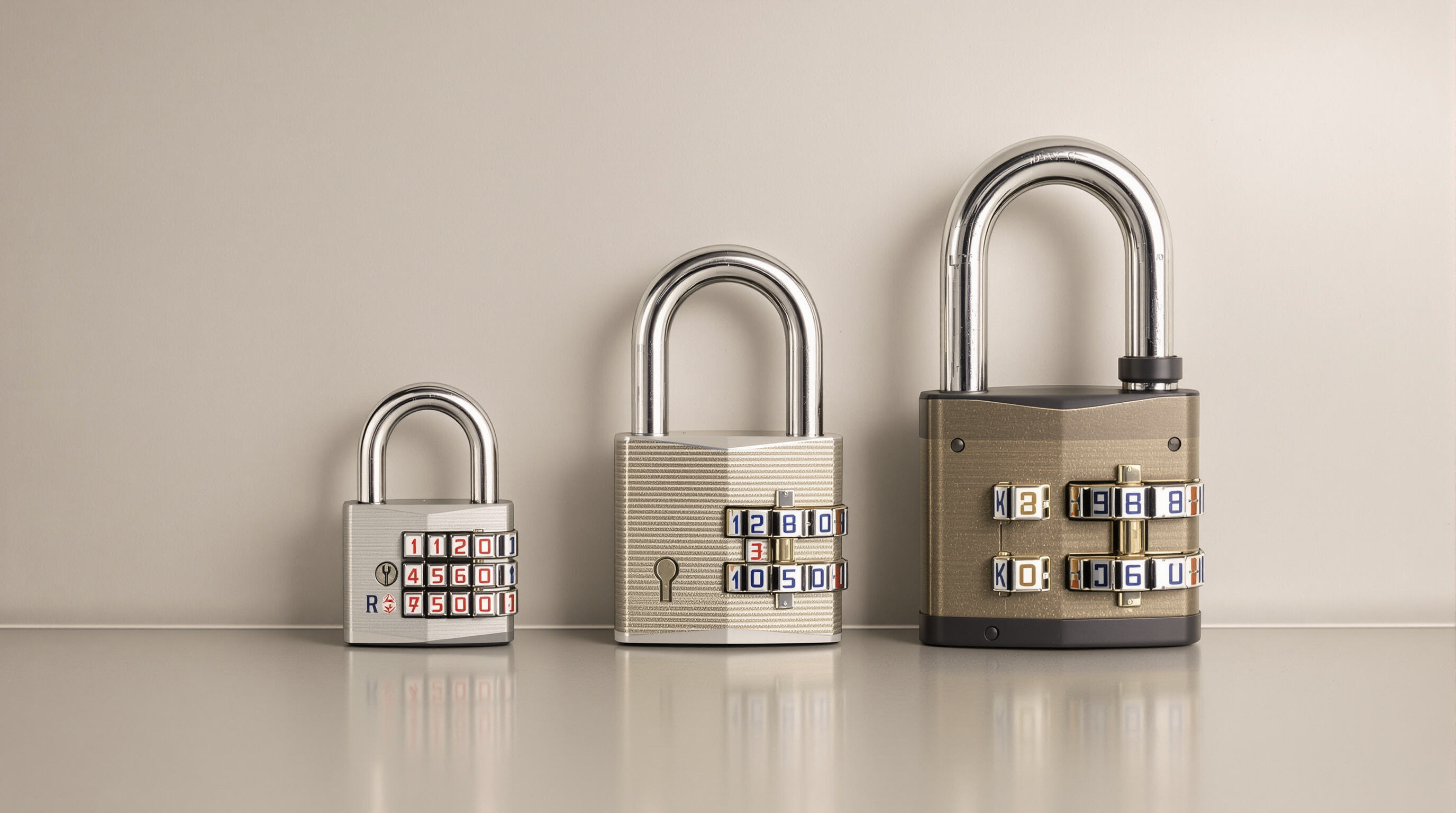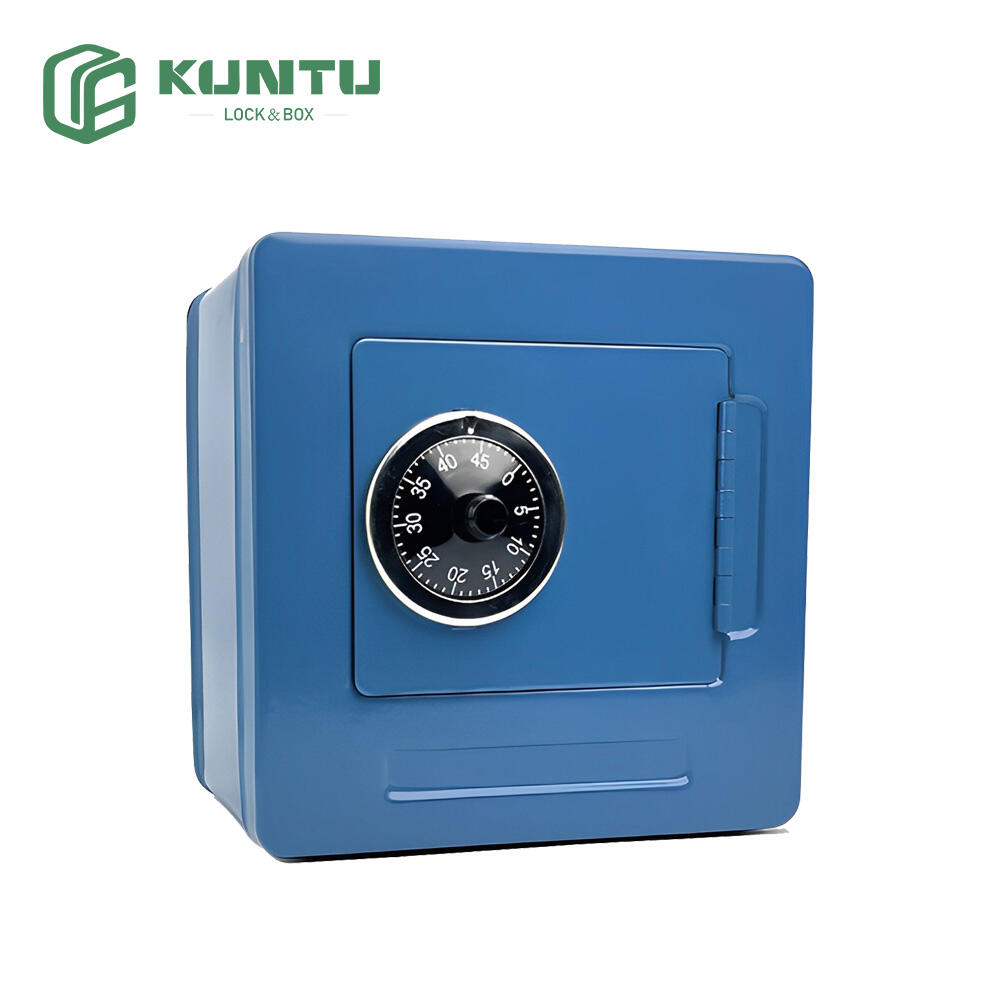How Combination Padlocks Work: Understanding Core Mechanisms and Security Features

Internal Mechanics of Combination Padlocks and How They Prevent Unauthorized Access
Inside all combination padlocks sits what's known as a wheel pack system. When someone enters the right numbers, three or four spinning discs line up so a metal piece called the fence can fall down and free the shackle. The basic design hasn't changed much since it was first protected by patent back in 1921 and still forms the basis for today's locks. Each disc has a small cutout that needs to match up exactly with the others when turning the dial. High quality locks need these cuts to be within about 25 microns of each other. What makes them secure? Well, if just one number is off, those little notches won't line up properly, keeping intruders out.
Key Construction Elements That Influence Pick and Tamper Resistance
- Hardened steel components: Rotors and spindles made from grade 440C steel resist drilling attempts
- Anti-snag pins: Prevent tension tools from manipulating internal discs
- Tolerance engineering: Gaps between discs kept below 0.001’ to thwart shim attacks
Manufacturers achieve pick resistance through tight machining standards—premium models require 17 precision CNC steps versus 5 for basic locks.
Security Features: Shackle Design, Body Materials, and Anti-Tampering Technologies
| Feature | Standard Models | High-Security Models |
|---|---|---|
| Shackle Diameter | 8mm carbon steel | 12mm boron alloy |
| Body Material | Cast zinc | Forged brass with PVD coating |
| Anti-Tamper | Basic pin tumbler | 8+ false gates & ball bearings |
Boron alloy shackles require 16-ton hydraulic cutters rather than standard 4-ton bolt croppers. Weatherproof brass bodies prevent saltwater corrosion for 5x longer than zinc counterparts, as confirmed by ASTM B117 salt spray tests.
Understanding False Feedback and Dial Manipulation Vulnerabilities
According to research from Lock Security Lab in 2023, around 7 out of 10 cheap combination padlocks (those costing less than thirty bucks) suffer from what's called false feedback problems. These are those annoying little clicks you feel when turning the dial that actually don't mean anything but trick people trying to crack them open. Criminal types take advantage of this weakness by pulling on the metal part while they twist the numbers, looking for tiny shifts in resistance as they go through possible combinations. They basically map out where they think the correct spot might be based on these misleading signals. Better quality locks fight back against this technique using special features like randomizing the click pattern so it doesn't give away clues, plus some high end ones have these fancy tungsten carbide coated discs inside that make it really hard to tell exactly where the actual locking mechanism sits.
Common Security Threats and How to Protect Against Combination Padlock Breaches
Top User Mistakes That Weaken Combination Padlock Security
Over 60% of combination padlock breaches stem from preventable user errors, including predictable code selection and mechanical mishandling. Many users default to sequences like "1234" or reuse codes across multiple locks, creating systemic vulnerabilities. Forcing stiff dials instead of proper lubrication accelerates wear, reducing precision and making locks easier to manipulate.
The Risks of Predictable or Factory-Set Combinations
Factory defaults like "0000" or "1234" accounted for 48% of breached combination padlocks in 2023 security audits. Criminals exploit these patterns through “brute force†dial rotations or code-guessing algorithms. Reusable combination locks with customizable settings reduce this risk by enabling unique 6-digit codes without sequential or repeating numbers.
Case Study: School Locker Breaches Due to Poor Combination Practices
In early 2022, a Chicago high school had a major locker security problem when around 112 lockers got broken into over just two weeks. Students were using predictable combinations based on birth years and favorite athlete jersey numbers. When investigators looked into how this happened, they found that most lockers could be cracked open after trying only about 50 different combinations. After the school implemented new security measures like forcing everyone to use randomly assigned codes and requiring password changes every three months, the number of break-ins dropped dramatically. Follow up reports showed an impressive 83 percent reduction in unauthorized access incidents compared to before these changes were put in place.
Preventing Social Engineering and Accidental Combination Exposure
30% of breaches involve indirect code exposure, such as writing combinations on locker doors or sharing them via unsecured messaging apps. Anti-shoulder-surfing dials with recessed numbers and combination storage apps featuring biometric authentication have proven effective countermeasures. Regular code changes every 90 days further limit unauthorized access opportunities.
Choosing the Right Combination Padlock for Your Use Case

Selecting Lock Complexity for Travel, Gym, or Industrial Environments
Security needs change depending on where people are coming and going all day long. When it comes to gym lockers, combination padlocks work best for most folks. Look for ones with those easy 3 number dials and strong shock resistant construction so they can handle constant opening and closing without slowing anyone down. In industrial areas though, things get serious fast. Locks need at least four digits and really thick steel shackles over 14mm thick. The numbers back this up too industry tests from last year found that locks meeting these specs stopped bolt cutters cold about two thirds of the time. And don't forget about travel locks either. They have to be small enough to fit in luggage but still meet TSA standards so nobody has to force them open when going through airport security checks.
Material Durability and Shackle Strength in High-Risk Settings
When working in places prone to corrosion or heavy impacts such as construction zones or boats at sea, go with combo padlocks featuring boron alloy shackles plus weather resistant rotating dials. Security experts point out that shackles should handle at least four tons of pulling force before giving way this is pretty much the minimum needed to stop someone from breaking them using leverage tools. Recent testing shows locks with thermoplastic nylon coatings last over twice as long compared to standard zinc alloy models in real world conditions. These findings come from studies conducted on high security locking systems across various industries facing harsh environmental challenges.
Resettable vs. Fixed-Combination Models: Trends and Practical Benefits
People are increasingly turning to resettable combo locks for personal use because they can change the code when there's any suspicion of tampering. This simple feature stops about 78 out of 100 security breaches from happening again in places where multiple people access the same area, according to research from Ponemon in 2023. Meanwhile, fixed combination locks still hold strong in industrial settings where having all codes managed centrally cuts down on mistakes made by workers. The latest generation of smart combo locks brings something new to the table though. They combine permanent master codes for managers with temporary access codes that disappear automatically once a shift ends, giving businesses both control and convenience without sacrificing security.
Best Practices for Setting, Using, and Maintaining Your Combination Padlock
Creating secure yet memorable combinations without compromising randomness
Balance security and memorability by combining random number sequences with personal mnemonics. Avoid patterns like birth years or repeating digits—studies show 34% of combination padlock breaches exploit predictable number choices. Instead, use methods like:
- Scrambling digits from memorable dates (e.g., 1945 ’ 5914)
- Adding prime numbers to an address
- Splitting a memorable phrase into numerical equivalents (A=1, B=2)
Efficient usage techniques to prevent dial wear and alignment issues
Rotate dials firmly but smoothly, avoiding abrupt stops that stress internal mechanisms. Always clear the combination by turning the dial three full revolutions after locking—this realigns wheels and prevents partial engagement that causes 72% of mechanical failures in residential padlocks.
Maintenance: Lubrication, weatherproofing, and long-term functionality
| Task | Frequency | Recommended Products |
|---|---|---|
| Lubrication | Every 6 months | Dry graphite powder |
| Corrosion check | Monthly | Silicone spray |
| Shackle inspection | After extreme weather | N/A |
For outdoor combination padlocks, apply marine-grade grease to hinge points annually. Never use WD-40—its solvent properties degrade internal plastic components.
Troubleshooting common problems like stuck dials or spring fatigue
Resist forceful manipulation of stiff dials. Instead:
- Apply heat (max 50°C) to expand frozen metal components
- Tap the lock body gently with a rubber mallet
- Use a lock de-icer spray for winter-related jams
For chronic spring fatigue, replace the lock rather than attempting repairs—compromised springs fail 3× faster in high-use scenarios.
FAQs
Why are combination padlocks considered secure?
Combination padlocks are considered secure due to their wheel pack system, which requires precise alignment of numbers. If any number is incorrect, the lock will not open, preventing unauthorized access.
How can I prevent my combination code from being easily guessed?
Avoid using predictable codes like "1234" or "0000". Opt for random number sequences combined with personal mnemonics and regularly change your code to prevent breaches.
What should I do if my combination padlock dial gets stuck?
To fix a stuck dial, try applying heat to expand frozen components, gently tap the lock with a rubber mallet, or use a lock de-icer spray.
Are resettable combination locks more secure than fixed ones?
Resettable locks allow you to change your code whenever needed, reducing the risk of tampering. They're preferred for personal use, while fixed combination locks are useful in industrial settings for easier code management.
Table of Contents
-
How Combination Padlocks Work: Understanding Core Mechanisms and Security Features
- Internal Mechanics of Combination Padlocks and How They Prevent Unauthorized Access
- Key Construction Elements That Influence Pick and Tamper Resistance
- Security Features: Shackle Design, Body Materials, and Anti-Tampering Technologies
- Understanding False Feedback and Dial Manipulation Vulnerabilities
- Common Security Threats and How to Protect Against Combination Padlock Breaches
- Choosing the Right Combination Padlock for Your Use Case
- Best Practices for Setting, Using, and Maintaining Your Combination Padlock
- FAQs

